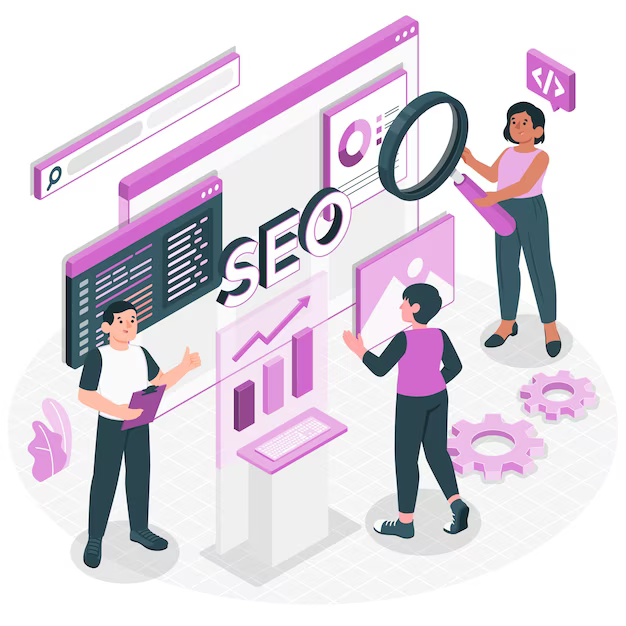In the ever-evolving world of eCommerce, SEO (Search Engine Optimization) plays a pivotal role in driving traffic and sales to online stores. However, navigating the complexities of eCommerce SEO can be challenging. Many businesses make common mistakes that can hinder their online visibility and overall success. This article will explore these common mistakes and provide actionable tips to help you avoid them, ensuring your eCommerce site stands out in search engine results.
Understanding eCommerce SEO
Before diving into the common mistakes, it’s crucial to understand what eCommerce SEO entails. eCommerce SEO focuses on optimizing your online store to rank higher in search engine results pages (SERPs). This involves a combination of on-page, off-page, and technical SEO strategies tailored specifically for eCommerce websites.
Importance of eCommerce SEO
Effective eCommerce SEO increases your website’s visibility, drives organic traffic, and ultimately boosts sales. By improving your search engine ranking, you make it easier for potential customers to find your products and services. In a competitive market, particularly in regions like Gold Coast, optimizing for eCommerce SEO can make a significant difference in your business’s success.
Common eCommerce SEO Mistakes and How to Avoid Them
1. Neglecting Keyword Research
Mistake: One of the most common mistakes in eCommerce SEO is neglecting thorough keyword research. Many businesses either fail to identify the right keywords or use keywords that are too broad or too competitive.
How to Avoid: Conduct comprehensive keyword research to identify relevant keywords with a balance of search volume and competition. Use tools like Google Keyword Planner, Ahrefs, or SEMrush to find keywords specific to your products and target audience. For instance, if you’re targeting a local market, such as “eCommerce SEO Gold Coast,” incorporate local keywords to capture regional traffic.
2. Poor Product Page Optimization
Mistake: Another significant mistake is failing to optimize product pages effectively. This includes neglecting unique product descriptions, missing meta tags, and poor use of images.
How to Avoid: Ensure each product page has a unique and descriptive title tag, meta description, and header tags. Write detailed, original product descriptions that incorporate relevant keywords naturally. Optimize images by using descriptive filenames and alt tags. Well-optimized product pages not only improve SEO but also enhance the user experience, which can lead to higher conversion rates.
3. Ignoring Technical SEO
Mistake: Technical SEO is often overlooked but is crucial for the overall performance of your eCommerce site. Common technical issues include slow page load times, broken links, and poor mobile optimization.
How to Avoid: Regularly audit your website for technical issues and address them promptly. Use tools like Google Search Console and PageSpeed Insights to identify and fix problems related to page speed, broken links, and mobile usability. Ensure your site is mobile-friendly, as a significant portion of eCommerce traffic comes from mobile devices.
4. Duplicate Content Issues
Mistake: eCommerce sites often suffer from duplicate content issues, particularly with product descriptions and category pages. Duplicate content can confuse search engines and dilute your rankings.
How to Avoid: Use canonical tags to indicate the preferred version of a page and avoid duplicate content. Create unique product descriptions and avoid using manufacturer-supplied descriptions verbatim. For category pages, ensure each page has unique content and meta tags.
5. Lack of Internal Linking
Mistake: Internal linking helps distribute page authority across your site but is often underutilized in eCommerce websites. Poor internal linking can affect crawlability and user navigation.
How to Avoid: Develop a strategic internal linking structure that connects related products, categories, and blog posts. This not only helps with SEO but also improves the user experience by making it easier for visitors to find relevant products and information.
6. Neglecting User Experience (UX)
Mistake: SEO is not just about search engines; it’s also about providing a great user experience. Poor UX can lead to high bounce rates and low engagement, negatively impacting your SEO.
How to Avoid: Focus on creating a user-friendly website with easy navigation, clear calls to action, and a responsive design. Ensure your site is visually appealing and that users can quickly find what they’re looking for. Regularly test your site’s usability and make improvements based on user feedback.
7. Ignoring Local SEO
Mistake: For eCommerce businesses with a local presence, ignoring local SEO is a critical error. Failing to optimize for local search can result in missed opportunities to attract nearby customers.
How to Avoid: Optimize your website for local search by including location-based keywords, such as “eCommerce SEO Gold Coast,” in your content and meta tags. Create and optimize a Google My Business listing, and encourage local customers to leave reviews. Ensure your name, address, and phone number (NAP) are consistent across all online platforms.
8. Inadequate Use of Schema Markup
Mistake: Schema markup helps search engines understand your content better, but many eCommerce sites fail to implement it effectively. This can result in missed opportunities for enhanced search results.
How to Avoid: Implement schema markup for products, reviews, and other relevant data. This helps search engines display rich snippets, such as product prices and ratings, which can improve your click-through rates and overall visibility in search results.
9. Failing to Monitor and Analyze Performance
Mistake: Without proper monitoring and analysis, it’s challenging to gauge the effectiveness of your SEO efforts and make necessary adjustments.
How to Avoid: Regularly track your SEO performance using tools like Google Analytics, Google Search Console, and other SEO tracking tools. Monitor key metrics such as organic traffic, bounce rate, and conversion rates. Use this data to refine your SEO strategy and address any issues that arise.
10. Overlooking Content Marketing
Mistake: Content marketing is a powerful tool for SEO, but many eCommerce sites overlook it. Engaging and valuable content can attract visitors and build authority.
How to Avoid: Develop a content marketing strategy that includes blog posts, guides, and other valuable content relevant to your audience. Focus on creating content that addresses customer pain points and interests. Share your content through social media and other channels to increase its reach and drive traffic to your site.
Conclusion
Avoiding these common eCommerce SEO mistakes can significantly enhance your online store’s visibility and performance. By investing time in proper keyword research, optimizing product pages, addressing technical issues, and focusing on user experience, you can create a robust SEO strategy that drives traffic and increases sales. Remember, SEO is an ongoing process, so regularly review and adjust your strategies to stay ahead of the competition and meet the evolving needs of your customers. Whether you’re based in Gold Coast or anywhere else, mastering eCommerce SEO will give your online business the competitive edge it needs to succeed.




